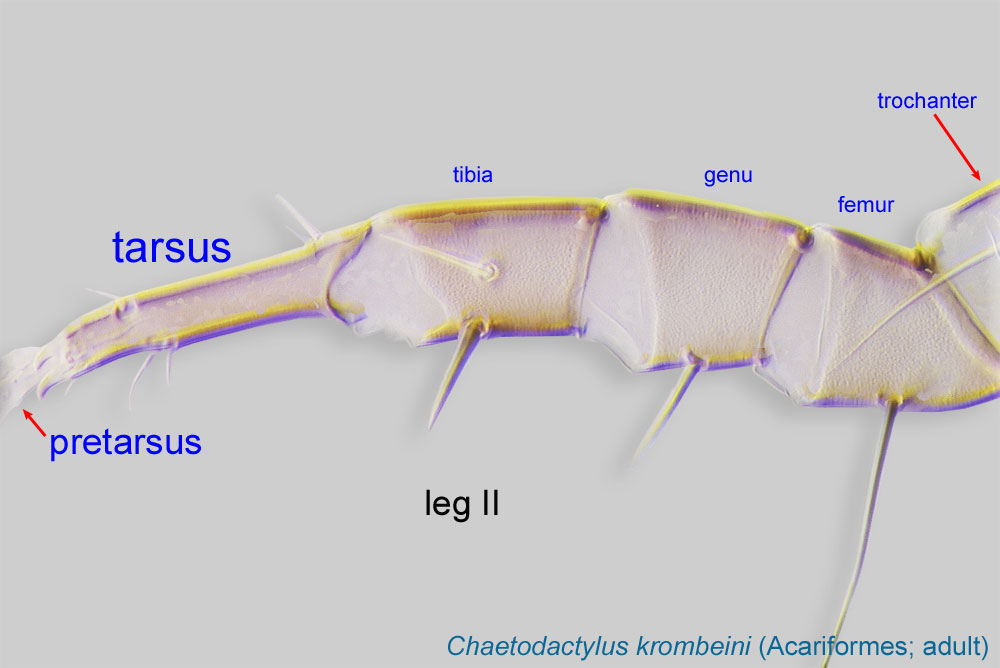probably neutral to beneficial; usually a generalist predator; uses bees, among other insects, for dispersal
Chelacheles Baker, 1958
Superorder Acariformes » Order Trombidiformes » Suborder Prostigmata » Infraorder Eleutherengona » Hyporder Raphignathina » Family Cheyletidae » Genus Chelacheles
Chelacheles strabismus Baker, 1958
Adult: Palptarsus with 1 comb-like seta (sul) (Fig. 3). Apical dorsal knob distinctly developed on tarsustarsus:
Terminal segment (also known as podomere or palpomere) of legs or palps. In Parasitoformes it can be subdivided into telotarsus and basitarsus.
 I (Fig. 3). Palpfemur with 4 setae. Eyes present (Fig. 1). TarsiTarsus:
I (Fig. 3). Palpfemur with 4 setae. Eyes present (Fig. 1). TarsiTarsus:
Terminal segment (also known as podomere or palpomere) of legs or palps. In Parasitoformes it can be subdivided into telotarsus and basitarsus.
 I-IV with paired claws (Fig. 2).
I-IV with paired claws (Fig. 2).
Only one species is associated with bees (Chelacheles temoak), and it can be distinguished from other Chelacheles species using a key in Bochkov and OConnor, 2004Bochkov and OConnor, 2004:
Bochkov, A. V. amp; B. M. OConnor. 2004. Phylogeny, taxonomy and biology of mites of the genera Chelacheles and Neochelacheles (Acari: Cheyletidae). Invertebrate Systematics 18: 547-592..
Nearctic, Palaearctic, Oriental, and Afrotropical regions. The single known bee-associated species, Chelacheles temoak, is from the USA.
apid bee Diadasia sphaeralcearum (phoretic host)
unknown
Chelacheles occurs in stored products, bird nests, subcorticalsubcortical:
Under tree bark.
habitats, forest litter, oak branches, soil, ant nests, and the fungus Daldinia concentrica (Xylariales). Species of Chelacheles are probably general predators on small invertebrates. Phoretic phoretic:
Pertaining to phoresy; using another organism (i.e., a host) for dispersal to new habitats. Phoresy can be distinguished from parasitism because feeding typically does not occur during phoresy.
hosts include a bee and wood-boring beetles of the family Bostrichidae (Xyloperthodes nitidipennis and Sinoxylon crissum).